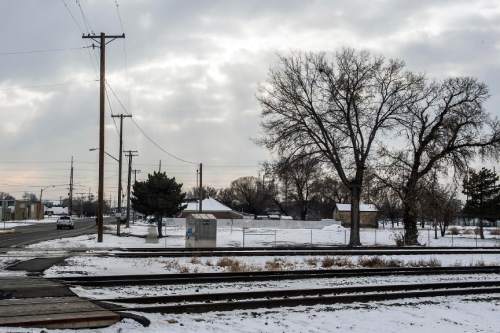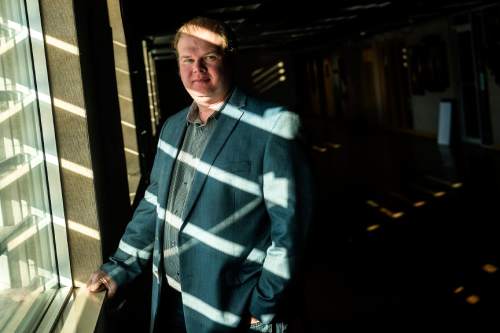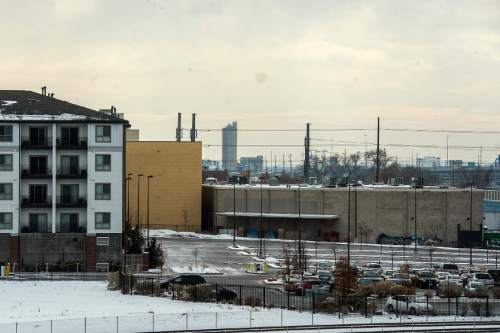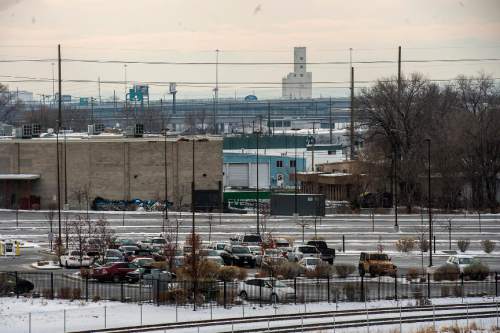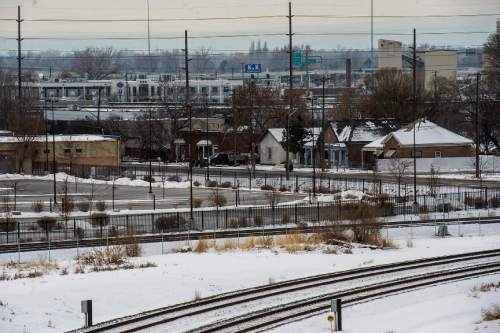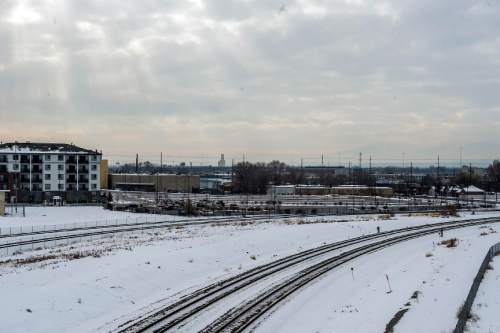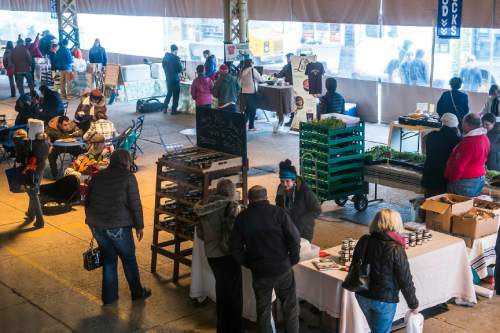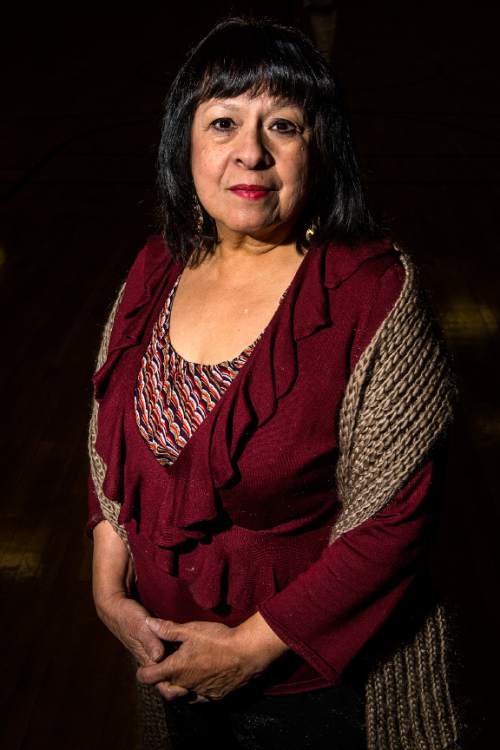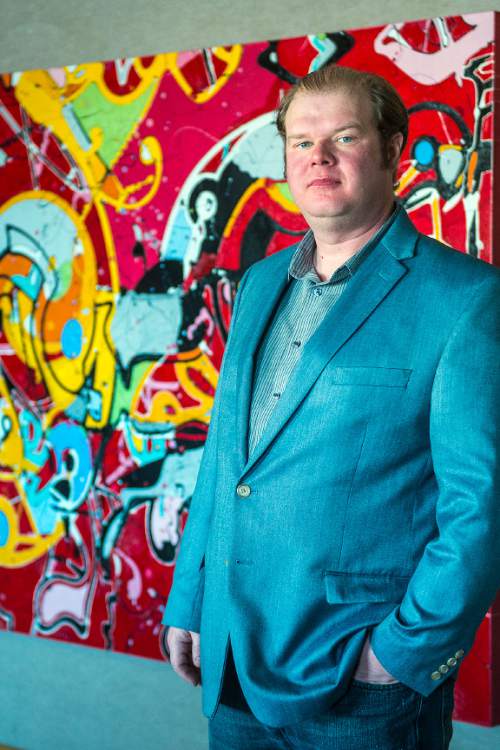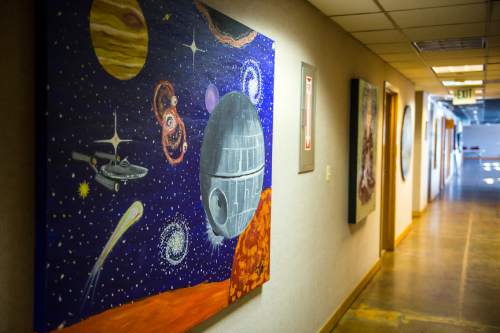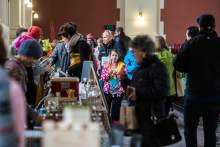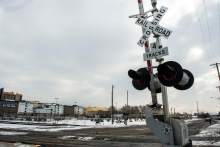This is an archived article that was published on sltrib.com in 2015, and information in the article may be outdated. It is provided only for personal research purposes and may not be reprinted.
Though dubbed an urban gateway, the western edge of Salt Lake City's downtown often gets overlooked as people zoom on and off Interstate 15.
The city's latest draft master plan for its downtown calls the drab industrial stretch the Depot District, a neighborhood seen as more than ripe for renewal. Its dozen or so blocks of aging warehouses and rail yards sprinkled with homes and businesses are set to be transformed within five years.
Private developers, governments, arts and civic groups and a host of other powerful interests have multiple projects in the works around Rio Grande Depot, pushing downtown decidedly westward with millions of dollars in public and private investment. Some development deals have been a decade or more in the making; more are expected to follow.
If only some go ahead, the depot area will add thousands of residents in hundreds of trendy apartments. They would be lured by sweet access to public transit, freshly landscaped streets, newly minted shops, plenty of green spaces and a short jaunt to downtown night life. Some envision a blighted district once centered on gritty industry and shipping becoming the capital's newest and most fashionable enclave.
District dwellers someday will commute on new light-rail lines, supporters say, and stroll through a cityscape refreshed with taxpayer backing. According to one long-range proposal, the district might even see a new park spread over multiple blocks, its lush expanse carved from a mix of public and residential lots hugging the eastern skirt of I-15.
"This is a phenomenal opportunity to create a vibrant, diverse, walkable neighborhood," said D.J. Baxter, executive director of Salt Lake City's Redevelopment Agency (RDA). "It will be a major transformation."
The pending building boom has given a variety of key players — from some of Utah's biggest developers to City Hall and the Utah Transit Authority — major financial interests in the area's success. Existing projects nearby such as The Gateway shopping mall and new residential complexes on North Temple also are likely to benefit.
"It feels like all the stars are aligning to really advance this district as one of the most exciting parts of downtown and the state," said Jason Mathis, executive director of the Downtown Alliance.
This westward expansion also has lent new urgency to solving chronic problems related to the homeless population. Mayor Ralph Becker recently launched a yearlong study of homeless services downtown, raising possibilities the network of shelters and soup kitchens might move.
The mayor's announcement followed a concerted push by area business owners and others through the Pioneer Park Coalition. That group says it wants to reduce crime and vagrancy in and around the historic urban park at 400 South and 400 West, a hangout for some homeless.
"We've all got a huge investment here,"said Forrest McNabb, a coalition leader and senior vice president at Big-D Construction, whose refurbished offices sit just west of Pioneer Park. "We want people to come here, not go away."
Advocates for the homeless have questioned whether the coalition is putting business needs above those of the disadvantaged, with an undue focus on moving vital services to make way for gentrification.
—
The "hub" hubbub • At the same time, some big real estate plays are clearly underway. The city, for one, has a major stake of its own in the Depot District.
After years of buying up land in the area, the RDA will switch gears early this year and unveil long-crafted plans to redo two city blocks north and south of 300 South between 500 West and 600 West. Now referred to in city documents as the RDA's "hub development," the undertaking is likely to have widespread effects.
With help from private developers, the RDA intends to bring in new high-density residential units, retail spaces and parking garages in three phases, all padded with parks, paths and plazas. The idea, officials say, is to initiate more renewal, whether through public tax incentives or creation of conditions that entice others.
The hub development includes narrowing a block of 300 South and turning it into a verdant festival street, capable of hosting open-air events and offering a permanent site for a year-round farmers market. The popular market now splits its seasons, summers in Pioneer Park and winters in Rio Grande's main hall.
The RDA project — kitty corner from The Road Home shelter for the homeless — also would overhaul and reuse two historic buildings, Beehive Brick and an old Serta Mattress site, in homage to the neighborhood's past, Baxter said.
Meanwhile, private developers want to put up a major four-story apartment complex a block north of the RDA's hub, called Alta Gateway.
Wealthy insurance executive and former Salt Lake Tribune owner Phil McCarthey purchased most of the block through a series of McCarthey family trusts, property records show. Real estate developer Wood Partners says it is under contract to buy the land and has spent more than a year seeking approval for an initial 264 units of high-density residential and 459 parking spaces, along with several small parks, pedestrian walkways and other amenities.
That development will launch soon. Once it's complete, city documents show Wood Partners has blueprints for a second round of apartment construction on the same block.
Alta Gateway would add residences to hundreds of new units built recently a few blocks north, near the North Temple viaduct, including Bridges at Citifront and upscale apartments next to The Gateway known as Liberty Gateway. Residential building in the Depot District also could extend an ongoing, citywide rush of multifamily construction for several more years.
The new downtown master plan, up for City Council approval in early 2015, foresees significant demand for urban housing as the population across Salt Lake City's core rises from about 5,000 people to a projected 20,000 within 25 years.
—
Transit's on track • One of the Depot District's largest landowners is UTA, which holds sizable acreage surrounding its Salt Lake Central Station near I-15. The agency opened the intermodal hub in 2008, with passenger and support facilities for TRAX, FrontRunner, Amtrak and Greyhound. Now UTA says there's a lot more to come.
Two additional light-rail extensions may someday reach into the neighborhood, which already enjoys a level of access to public transit unequaled statewide.
UTA has hired a master developer, Utah-based Cottonwood Partners, to explore wider transit-oriented development, including retail and office space, across its depot parcels. The transit agency is conducting marketing and design studies, and wants to see the RDA's work unfold more fully before it moves ahead, said Steve Meyer, UTA's chief capital-development officer.
"It's a great opportunity," Meyer said. "There's a lot of excitement but people need to be patient."
For now, he said, UTA is proceeding with construction nearby of a $50 million bus-maintenance garage.
Rapid change in the area means uncertainty for existing residents and a chance at higher property values for some larger landowners. Said one industrial real-estate broker with ties in the neighborhood: "Rather than create the wave, we're going to ride it."
—
Gateway's future • The prospect of a city-backed upgrade in the district, new residents and several commercial projects is encouraging news to the owners of The Gateway, Illinois-based Retail Properties of America (RPAI).
Built by The Boyer Co., the distinctive beige-colored mix of stores, offices, theaters and condominiums along 400 West opened in 2002, an earlier foray into city redevelopment. But the open-air mall — home to The Tribune since its 2005 move from Main Street — has languished of late as it loses stores to City Creek Center, the LDS Church-built mall a few blocks east on Main Street.
Recent shareholder reports for RPAI show Gateway has one of the highest vacancy rates among all the 218 U.S. retail properties owned by the real-estate investment trust. The mall saw $2 million in upgrades in 2013.
Company officials would not confirm claims they intend to shift The Gateway away from retail tenants and more toward becoming a regional entertainment center. RPAI spokeswoman Kim Freely would say only that the company supports advancement of high-density development in its Salt Lake City neighborhood.
"These efforts should assist in the repositioning and remerchandising of The Gateway," Freely said, "strengthening the community and increasing foot traffic in and around the center."
Still others in the area see a development wave coming and hope to stay and grow along with it.
Utah Arts Alliance landed in the district a few years ago after being ejected from a space on Main Street to make way for a new mega-theater, named for philanthropists George S. and Dolores Doré Eccles. The nonprofit alliance now operates in two buildings near 600 West and 100 South on RDA-owned land. The alliance footprint includes exhibit spaces, classrooms, an art garden and 35 studios rented to artists and creative professionals.
With two years remaining on its lease, the arts group wants to avoid another ouster.
Alliance director Derek Dyer said the organization is working with a developer, architects and planners on designs for an ambitious, four-story facility and grounds at the current locale. The project, he said, would create a live-work environment with community spaces and a sculpture garden, while adding as many as 64 residential units. The layout includes a spot for the Hoberman Arch, the iconic art installation from the 2002 Winter Olympics now sitting in storage for want of a permanent site.
Dyer said artist evictions are all too familiar in urban growth patterns: rent-strapped creative types move in when a neighborhood is blighted and affordable, only to be kicked out when developers take an interest.
"I've seen it happen over and over and over again," he said. "That's why we're trying to do a plan this time."
The idea hinges on raising cash for building costs and buying a dozen or so parcels of RDA and privately held land, but Dyer said the result would be well worth it. "It's really going to be one of the coolest places in the city."
Centro Civico Mexicano, Utah's oldest Latino organization, also is eager to remain in the Depot District, even as the proposed Alta Gateway complex goes up around it on the same block.
The advocacy and social-service group has been at 155 S. 600 West since 1939, starting with a small adobe structure. Generations of Spanish-speaking Utahns have a unique bond to the center, President Brandy Farmer said. In fact, when Centro Civico's leadership surveyed members about selling the building and lot, likely at a premium, and moving elsewhere, respondents overwhelmingly opposed it.
"They are emotionally attached to that piece of land," Farmer explained.
So the nonprofit group wants to overhaul and expand its current presence. Assuming it finds financial backing, Centro Civico envisions a revamped main building, with new educational and sports facilities, a museum devoted to Utah's Hispanic history and a cluster of residential units for senior citizens.
"We want to enhance what's going up around us," Farmer said. "We want our people and the community we serve to feel comfortable around here, too."
tsemerad@sltrib.com Twitter: @Tony_Semerad


